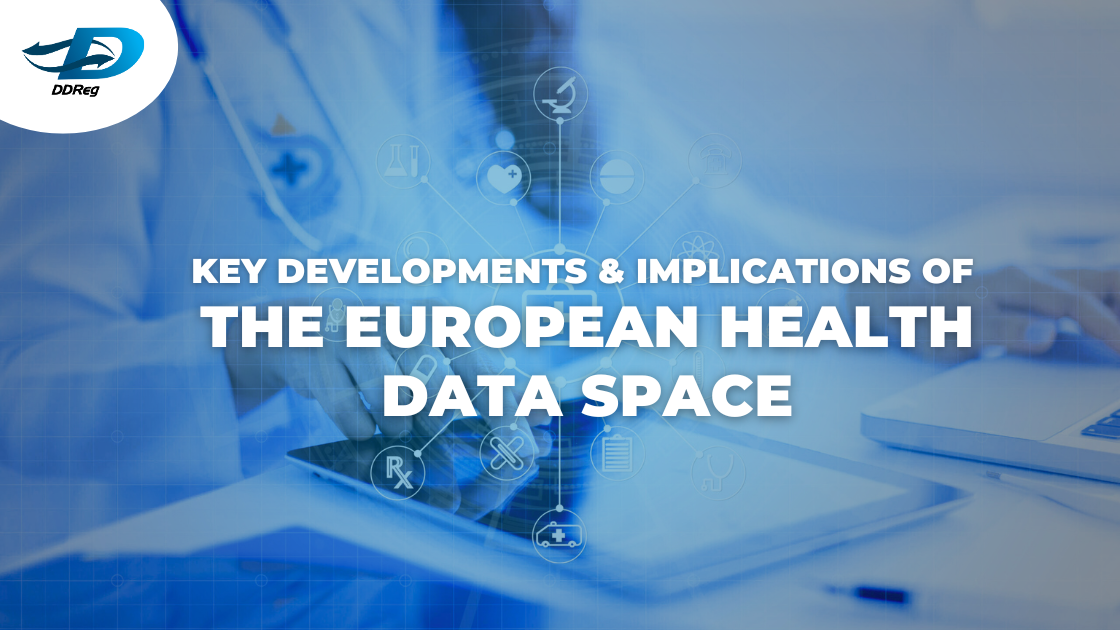Decoding European Health Data Space for Smarter Decisisons

Strong 8k brings an ultra-HD IPTV experience to your living room and your pocket.
In an age where data is often called the new oil, the healthcare sector is sitting on a goldmine of untapped potential. Every day, vast amounts of health data are generated across the European Union, offering incredible opportunities to transform the way healthcare is delivered, researched, and managed. Enter the European Health Data Space (EHDS)—a visionary initiative that promises to revolutionize how health data is used across Europe. From empowering patients with unprecedented control over their health records to fostering groundbreaking medical research, the EHDS is set to reshape the European healthcare landscape in ways we’ve never seen before. But what exactly does this mean for patients, healthcare professionals, and the future of medical innovation? Let’s take a closer look at the key developments and implications of the EHDS and explore how it’s paving the way for a healthier, more connected Europe.
What is the European Health Data Space?
The European Health Data Space (EHDS) is a health-specific ecosystem designed to manage the growing volume of health data across Europe. It includes a set of rules, common standards, digital infrastructures, and a robust governance framework. The EHDS has two fundamental objectives:
Primary Use – Empowering individuals by granting them greater digital access to and control over their personal health data at both national and EU-wide levels.
Secondary Use – Facilitating the secure and trustworthy reuse of health data for purposes such as scientific research, innovation, policy-making, and regulatory activities.
As part of the European Health Union, the EHDS aims to create a unified digital infrastructure for health data across EU member states, ensuring improved access to electronic health records (EHR), medical devices, and artificial intelligence (AI) systems. The regulation also builds upon existing frameworks such as the General Data Protection Regulation (GDPR) and the Data Governance Act, ensuring compliance and data protection.
The Legislative Journey of the EHDS
The journey to establishing the EHDS has been marked by significant legislative milestones. The European Commission proposed the EHDS regulation on May 3, 2022. By December 2023, the Council of the European Union reached a consensus on the regulation’s mandate. In March 2024, the European Parliament and the Council achieved a provisional agreement, and on April 24, 2024, the regulation was approved. The formal adoption by the Council occurred on January 21, 2025, and the regulation is expected to enter into force on March 26, 2025.
However, the implementation of the EHDS will be gradual. Key milestones include the European Commission adopting detailed implementing acts by March 2027, with full operationalization of key aspects, such as patient summaries and ePrescriptions, expected by March 2029.
Primary Use: Empowering Patients and Healthcare Professionals
The EHDS gives patients greater control over their health data, allowing them to access and share medical records across the EU, add wellness data, and correct inaccuracies. Patients can also restrict access to sensitive information, reinforcing privacy and autonomy.
Through MyHealth@EU, a secure digital infrastructure, the EHDS supports cross-border healthcare by enabling seamless access to key medical data like summaries, ePrescriptions, lab results, and discharge reports—improving care continuity and reducing redundant tests.
Healthcare professionals’ benefit from faster access to comprehensive patient data, enhancing diagnostic accuracy, treatment outcomes, and collaboration across borders, while also easing administrative workloads.
Secondary Use: Fueling Research, Innovation, and Policy-Making
The EHDS enables secondary use of health data—like EHRs, clinical trial results, and genetic data—through HealthData@EU, a decentralized network of national data access bodies. Researchers and innovators can securely access this data under strict governance for approved purposes.
This fosters breakthroughs in public health, treatment innovation, and product development. Policymakers can use insights to shape effective health strategies, and regulators can ensure the safety and efficacy of medicines and devices.
By bridging data gaps, especially in rare diseases and emerging threats, the EHDS opens new frontiers for evidence-based decision-making and scientific discovery across Europe.
Benefits for Patients, Healthcare Professionals, & Researchers
For Patients
The EHDS empowers patients with improved access to their health records, including medical history and treatments, which can be crucial when receiving care across EU member states. It also gives them control over who accesses their data and why, promoting transparency and trust in the healthcare system.
For Healthcare Professionals
With the EHDS, healthcare professionals gain quick access to comprehensive patient data, enabling better diagnoses and treatment decisions. It supports improved care coordination through seamless data sharing and allows professionals to contribute to medical research using anonymized health data.
For Researchers
Researchers benefit from enhanced access to large-scale, high-quality health data across the EU, facilitating robust studies on diseases, treatments, and health outcomes. This access fosters medical innovation and helps identify broader health trends.
For More, read our Blog post - https://resource.ddregpharma.com/blogs/key-developments-implications-of-the-european-health-data-space/
To get the daily updates, follow us on:
Facebook — https://www.facebook.com/DDReg
LinkedIn — https://www.linkedin.com/company/ddregpharma/
Twitter — https://x.com/DDRegPharma
Instagram — https://www.instagram.com/ddregpharma/
Note: IndiBlogHub features both user-submitted and editorial content. We do not verify third-party contributions. Read our Disclaimer and Privacy Policyfor details.






